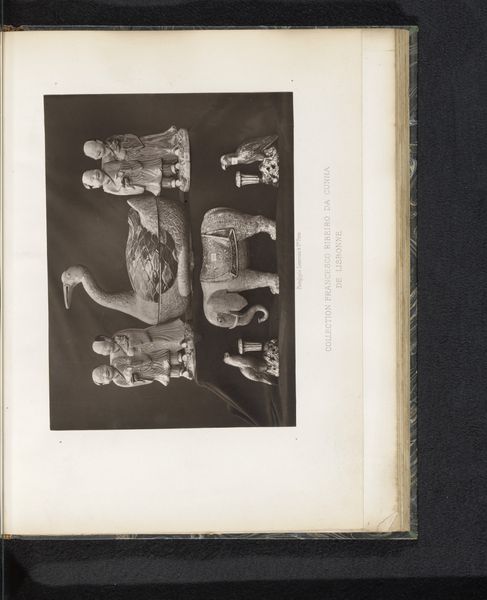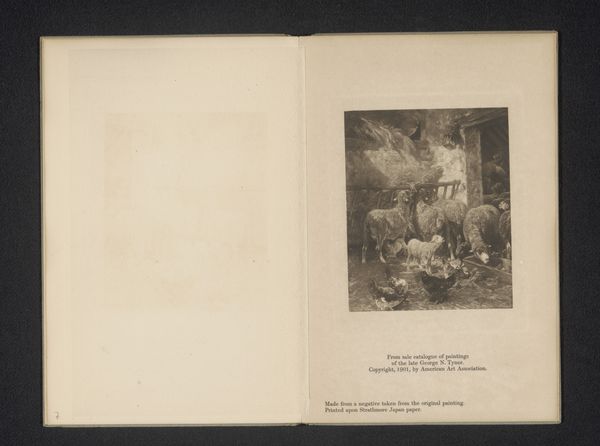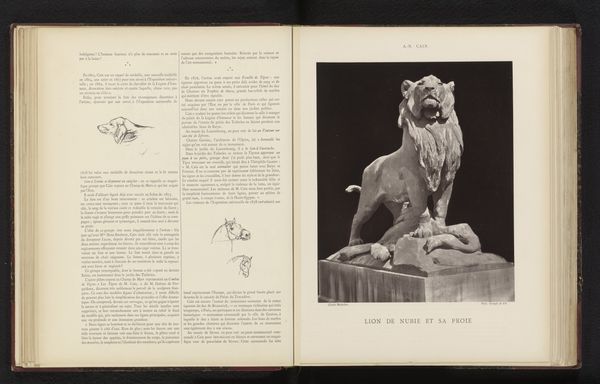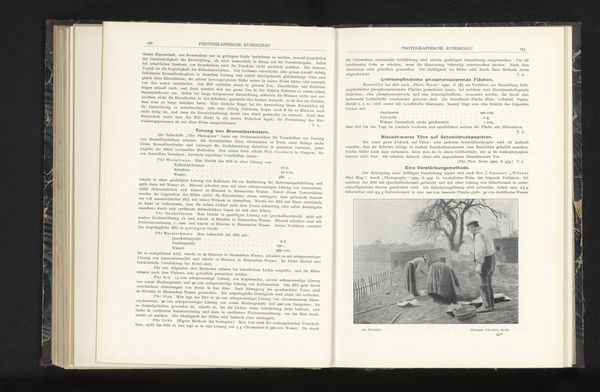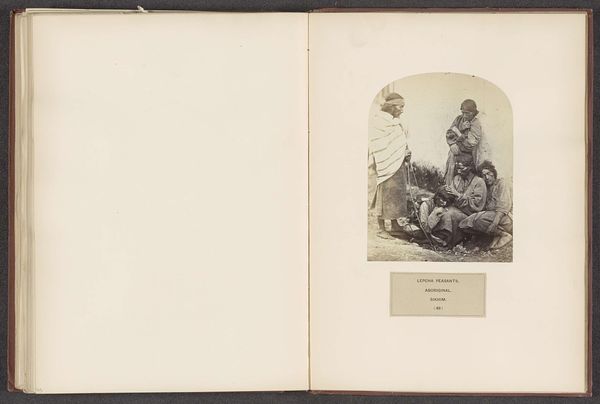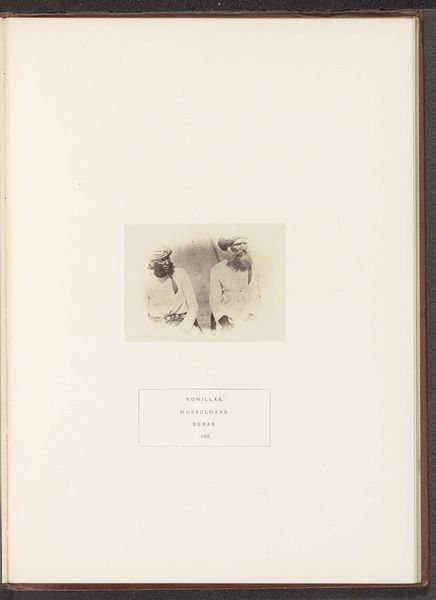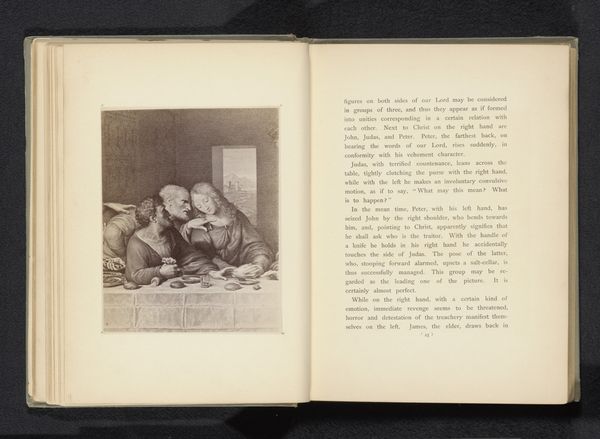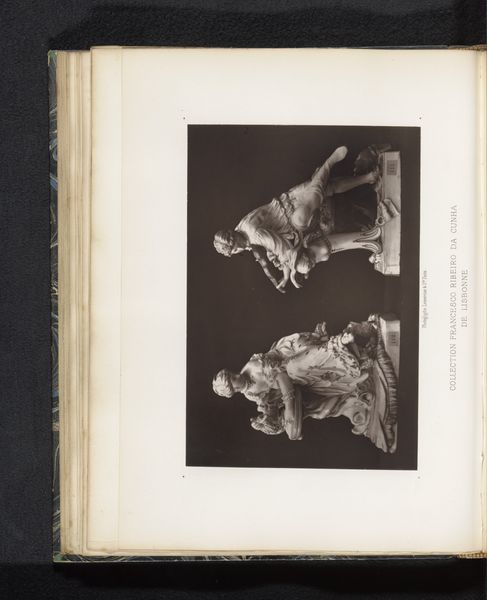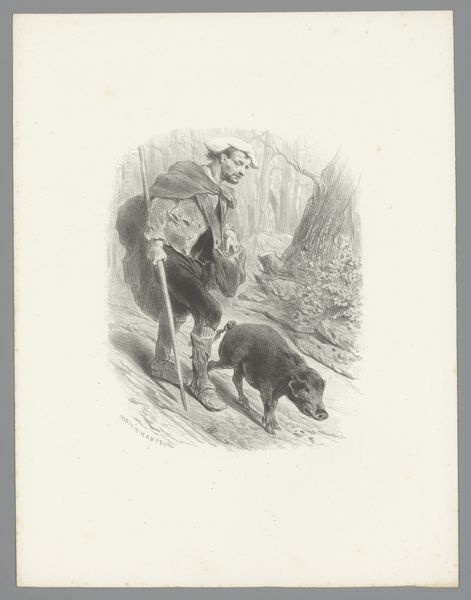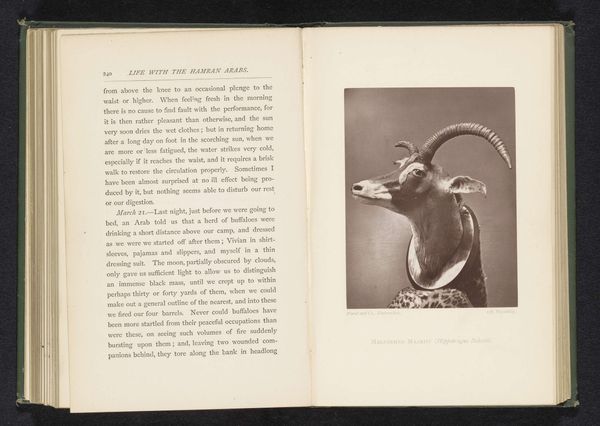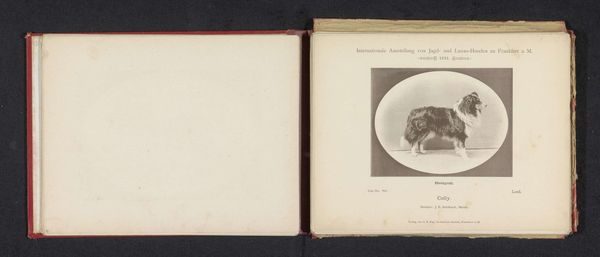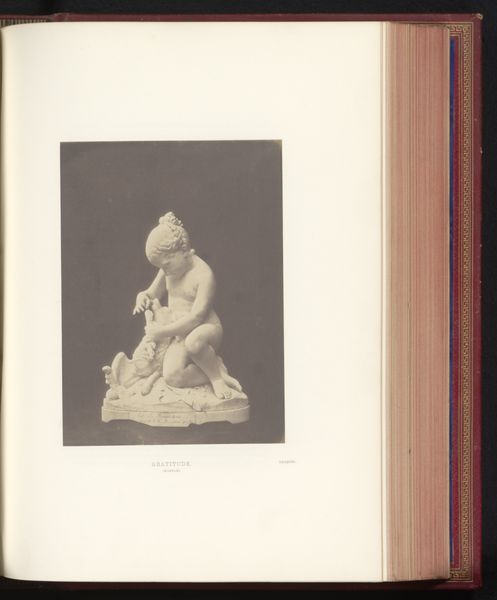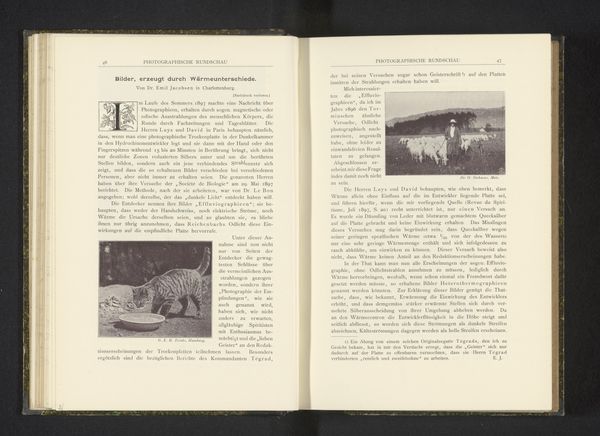
bronze, sculpture
#
bronze
#
figuration
#
sculpture
#
orientalism
#
realism
Dimensions: height 99 mm, width 88 mm
Copyright: Rijks Museum: Open Domain
This is Josef Löwy's autotype reproduction of Arthur Strasser’s sculpture, “The Prayer of an Indian,” printed in Vienna. The image presents a figure, presumably the Indian of the title, kneeling between two elephants on an elevated plinth. The sculpture appears in “Eder’s Yearbook for 1899.” Given the date and location, we can assume this imagery, particularly the so-called exoticism of its subject, has colonial underpinnings. It's crucial to ask what cultural assumptions were at play in its production and consumption. We can consider the influence of academic institutions and artistic conventions of the time, as well as the social status of the artist and the intended audience for such works. To fully grasp the meaning, further research would be needed, considering the representation of non-Western people in European art during the late 19th century. We should ask whether it is an Orientalist fantasy on the part of the artist, or a sincere attempt to represent another culture respectfully?
Comments
No comments
Be the first to comment and join the conversation on the ultimate creative platform.
